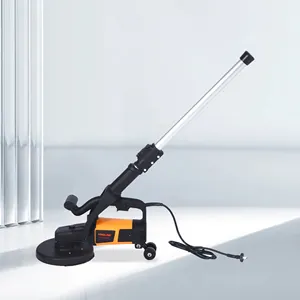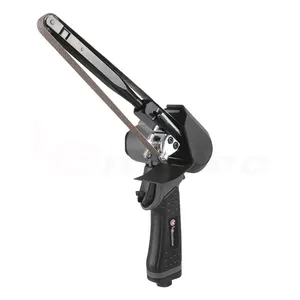Introduction
When it comes to DIY projects, having the right tools can significantly enhance your work. One such tool is the Air Belt Sander. Known for its powerful motor, compact design, and versatile applications, this tool can greatly improve your sanding tasks. This article will explore the Air Belt Sander in detail, discussing its benefits for DIY projects, how to choose the right one for your needs, and how to use and maintain it effectively. Let's delve into how this tool can take your DIY projects to the next level.
Understanding the Air Belt Sander
The Air Belt Sander is a robust tool equipped with a 0.5HP motor and a free speed of 16,000 rpm. It utilizes sanding belts of size 1/2" x 18" and comes with three different grits: #40, #60, and #80. The sander is compact, with an overall length of 15.15" and a net weight of 1.98 lbs. It operates at an air pressure of 90 psi and consumes 4 cfm of air. The air inlet size is 1/4". This tool is perfect for various sanding applications, offering a balance of power and precision.
Benefits of Using an Air Belt Sander for DIY Projects
Air belt sanders offer several advantages for DIY projects. They are generally lighter, quieter, and more durable than their electric counterparts, thanks to the absence of a motor. Pneumatic sanders, including air belt sanders, can also be more powerful, providing efficient sanding results. However, they require a substantial air compressor for operation. If you already own a large compressor or plan to use other air tools, an air belt sander could be a valuable addition to your toolset. Keep in mind, dust collection can be a challenge with these tools, so consider models with a dust connector.
Choosing the Right Air Belt Sander for Your Needs
When selecting an air belt sander, consider the power rating, which affects the type of sanding project it's suitable for. Durable sanders range from 80W to 1200W, depending on the engine type. The power source is also important, with corded belts offering more power but less portability than cordless ones. The speed of the machine, measured in feet per minute (fpm) or rotations per minute (rpm), impacts its efficiency. Lastly, ensure the sander is durable, lightweight, and its spare parts are readily available for easy maintenance.
How to Use an Air Belt Sander: A Step-by-Step Guide
An air belt sander is a powerful tool that requires a step-by-step guide to use effectively. First, install the belt. If the belt moves back and forth rather than sticking to the middle of the tool, adjust it until it stays steadily in the middle. Next, clamp the material you're working on. Once secured, you can start sanding. After you've achieved the desired smoothness, finish up your work. Remember, proper use of the air belt sander not only ensures a good result but also prolongs the tool's lifespan.
Safety Tips When Using an Air Belt Sander
Safety is paramount when using an air belt sander. It's crucial to maintain a record of users, hence the need for a Belt Sander sign-in sheet. This ensures that only those who are knowledgeable and trained in its operation are using the tool. The Environment, Health, and Safety department should keep these records for future reference. For any queries or concerns, don't hesitate to contact the EHS department.
Maintaining Your Air Belt Sander for Longevity
Maintaining your air belt sander is crucial for its longevity. Always pay attention to the belts; loosen them when not in use to prevent damage. After each job, use an air hose to blow out the drum, removing debris and dust. Regularly inspect the wheels and plugs for any signs of wear or damage. Check the drive belt for any cracks, frays, or general wear and tear. If you find any damage, it's time to buy a replacement. These maintenance tips will help keep your air belt sander running smoothly for a long time.
Conclusion
In conclusion, the Air Belt Sander is a game-changer for DIY enthusiasts. Its power, precision, and versatility make it an invaluable addition to your toolset. However, choosing the right model, understanding its operation, and maintaining it properly are crucial for optimal results. Remember, safety should always be a priority when using such powerful tools. With the right Air Belt Sander in your hands, your DIY projects can reach new heights of excellence. So, gear up and let the Air Belt Sander revolutionize your DIY journey.









































 浙公网安备 33010002000092号
浙公网安备 33010002000092号 浙B2-20120091-4
浙B2-20120091-4